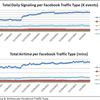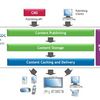By Thomas Fuerst, Senior Director, Multimedia Solutions MarketingAlcatel-Lucent
Monitoring and analyzing network data proactively saves operators time, money, and customers.
When a network service fails, it makes headlines, ticks off customers, and costs that network operator money. When a failure is headed off in advance, on the other hand, there might not be praise-laden headlines, but it's newsworthy nonetheless.
The traditional approach to customer care has typically been: a disgruntled customer calls customer service and complains of a service interruption or problem; the rep, learning of it for the first time, sends out a technician the next day, and eventually finds a resolution. Often, customers are left feeling put out, and the operator has spent significant time and money resolving the problem. Even worse is the customer who doesn’t call and just feels this is ‘typical’ of their network experience. That is a customer at risk of leaving.
Proactive care flips this dynamic on its head by using predictive analytics to identify potential outages or errors in the network and stop them before they occur. It consists of three main parts: one, constantly monitoring and measuring data on the network; two, real-time analysis of the data; and three, the most important, acting on that analysis to fix the problem.
Think of proactive customer care as the unsung hero of customer service. Its job is simply to maintain business as usual, leaving end customers none the wiser of any issues behind the scenes. But the job is anything about simple.
The move to IP, while flattening and simplifying the network, has upped the complexity of all the services that have to go over the networks, fixed and wireless alike. There's also a heightened expectation on behalf of customers that services will just work.
The bottom line is, operators should be improving how they react to service issues, but also doing more to prevent errors from occurring in the first place.
The good news is they are starting to understand the importance of being proactive. One of Asia’s largest mobile operators, for example, has been using proactive customer care to identify and optimize the performance of its optical network for its 120+ million customers for the past year.
Another large North American operator uses proactive care to track network trends, and predictive modeling to provide early warning of service issues. As a result, it has seen a 300 percent return on investment, and it assesses issues 30 to 50 percent faster on average. This has cut their internal staff's work effort in half over the course of a year. The time the staff save not grappling with service issues is now redirected to other, actual revenue-generating activities.
Leading-edge tools for proactive care are those that are truly self-learning in nature. Taking note of issues that happen in one network can help solve another issue in another network. Even though Key Performance Indicators (KPIs) and thresholds vary from one operator or one network to another, the smarter tools are those that use this “Big Data” analysis to address triggering behaviors will down the line, turn into issues and events. For example an operator in North America saw a trend of mobile calls being dropped after 180 seconds. Was this just a brief call? Was it a bad zone? Or was it a true drop in service? Hard to tell, but using proactive care, the operator realized that this wasn't a normal behavior. By tracking the data and analyzing the trend against multiple network behaviors, the problem was pinpointed and resolved before it became a customer problem.
Proactive care is applicable in the fixed world as well. Take an IPTV provider for which ensuring there is no jitter in its video streams is table stakes. Whenever there is a prime-time event such as a sporting event (like the Olympics for example) or inauguration, the network can get overloaded with so much video that it can affect the quality. An IPTV provider can use proactive analysis to see when they start dropping bits on a router in a path and catch it before pixilation occurs. They can then use this knowledge for future events, and share their experience so other operators do the same.
In today’s hyper-competitive market for network services, a lot of operators bank their reputation on being reliable. It’s the experience that matters most for the customer. Operators are selling their brand as much as the services themselves, so while network management has always been important, it is now as critical as the design of the network.
The more operators who proactively manage their networks, the less reactionary measure they'll have to take. And, that is something all customers will react positively too, whether they know it's happening or not.
Related Material: Read ‘It Pays to be Proactive’.












